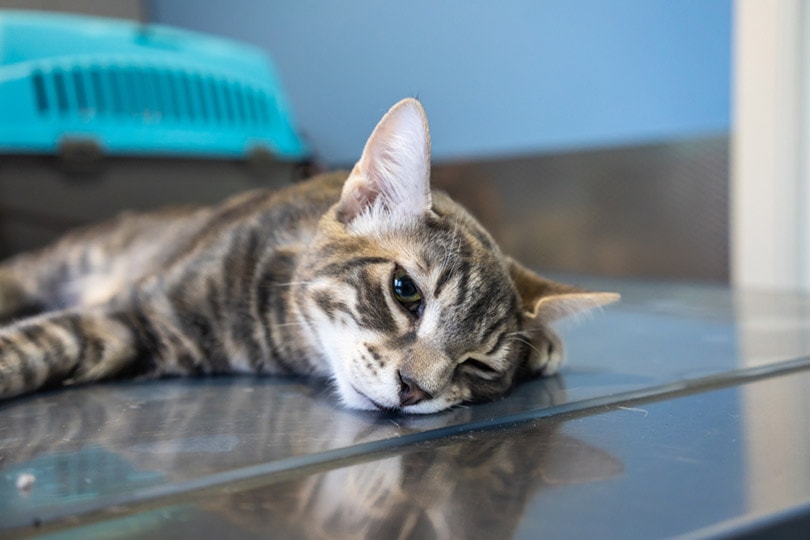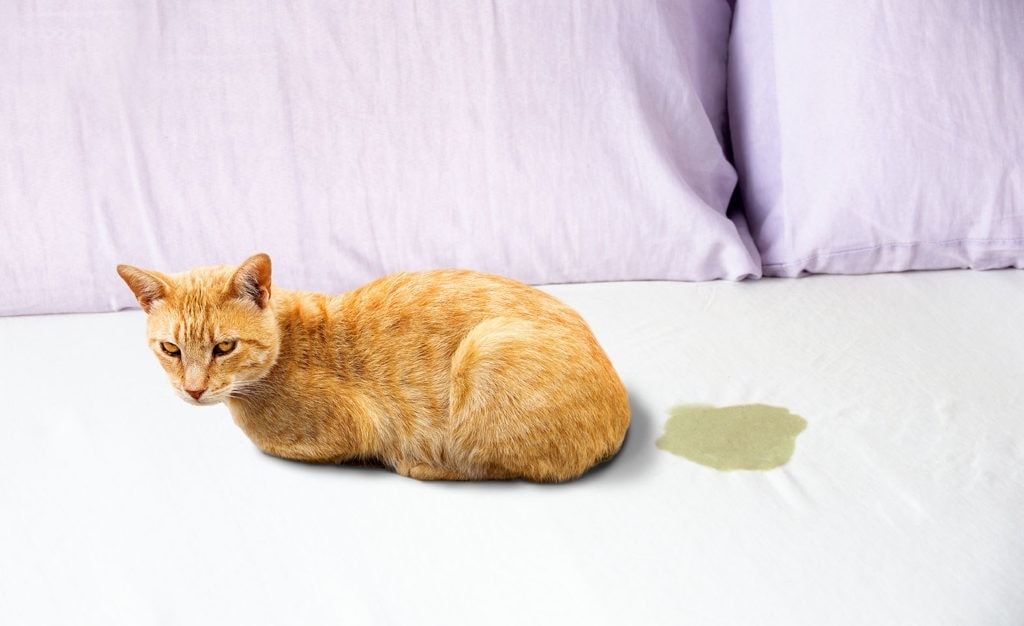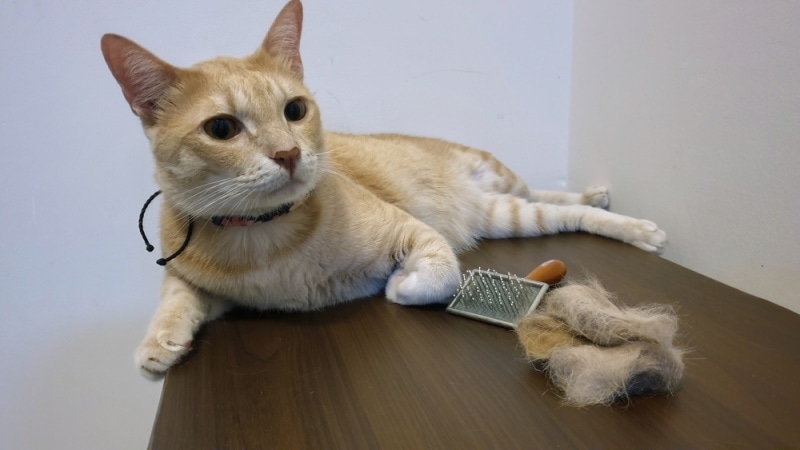How to Brush a Cat if They Don’t Want to Be Brushed: 6 Expert Tips

Updated on
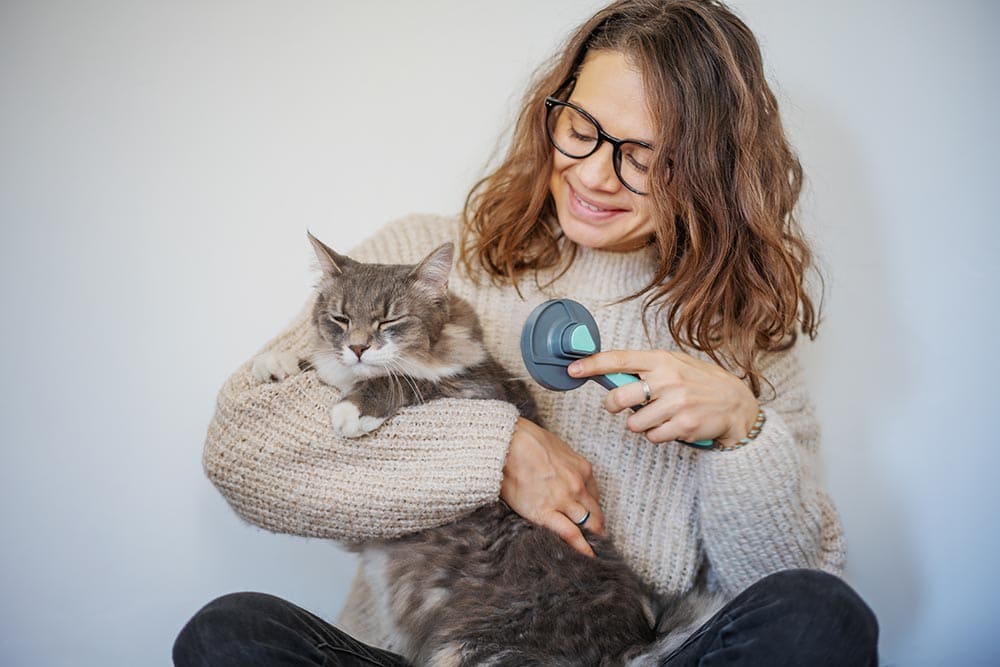
Some cats love being brushed and happily purr their way through grooming sessions, but that’s not universal. If your cat absolutely hates being brushed, you’re not alone! Some cats are scared of being brushed because of bad past experiences, while others just don’t love the manhandling. Luckily, most cats can learn to love brushing, or at least tolerate it. Here are some tips to make the process easier for you and your cat.
Top 6 Tips to Brush a Cat if They Don’t Want to Be Brushed
1. Let Your Kitty Explore the Brush
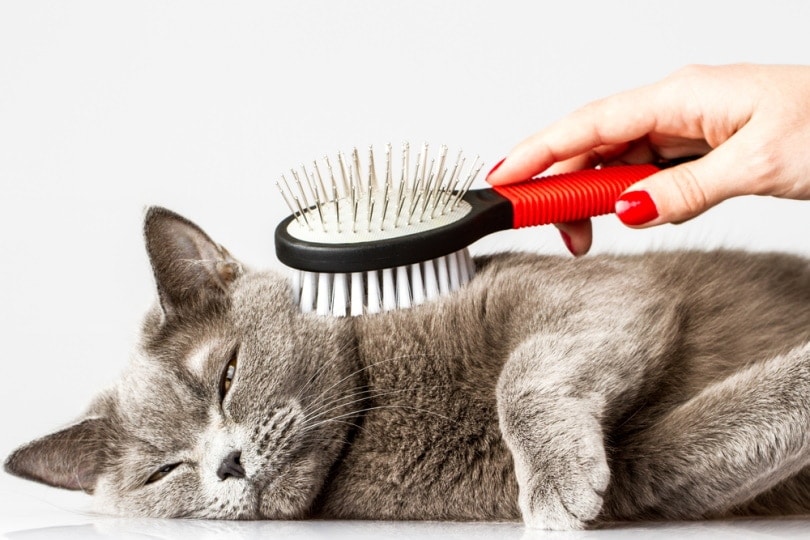
If your cat hates being brushed, one reason might be a lack of control. Even cuddly cats don’t like being touched all the time, and brushing can easily turn into a struggle because your cat feels contrary. Offer the brush to your cat to sniff, rub up against, and otherwise explore to help them feel a little more in control. You can also leave grooming tools out somewhere your cat can access them instead of placing them out of reach. However, you shouldn’t let your cat bite or play with brushes, as you don’t want them to be seen as a toy.
2. Start by Brushing “Safe” Areas
When you do try to brush your cat, start simply. Instead of trying to thoroughly brush your cat’s fur, start with a short “practice” session. Brush areas that your cat doesn’t mind being touched or likes to be pet. Some of the best places to start are the top of the head, shoulders, and back. Over time, you can increase this slowly until you’re brushing everywhere that needs brushing.
3. Try Brushing Right After Mealtime
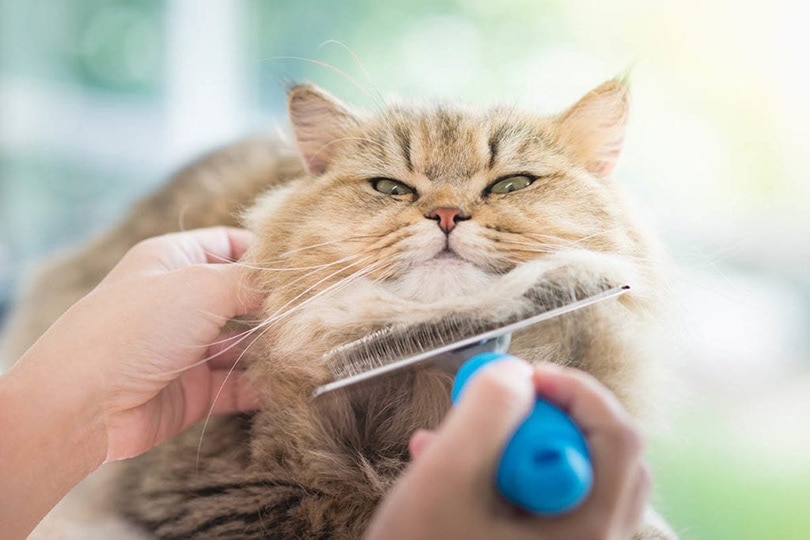
Cats like schedules, and picking the right time to brush your cat can help it be more normal. You want to pick a time that is consistent as well as one where your cat is generally happy and relaxed. After a meal is a great time to brush because your cat is usually content. Cats also instinctively groom themselves after eating, so a brushing session might be more welcome than normal.
Grooming your pet is a process that they either love or hate.
- ONE PUSH RELEASE - This kitten brush / cat brush pops out fur with just a simple press, leaving you...
- DURABLE - Cat shedding can be a tough ordeal. Made of resilient ABS plastic and metal bristles with...
If your cat tends to despise their grooming sessions, you can make it a bit more enjoyable with our Hepper Cat Brush. With soft pins and a one-click button for easy clean-up, this brush is something that both you and your cat will enjoy. This is our product, but we love it so much we just had to share!
4. Pick a Different Tool
There are lots of types of brushes on the market, and finding the right one can be tricky. You will need to take your cat’s coat type into account when picking a brush, but you can also look at preferences too. One option is to buy a grooming glove—this can be less stressful than a brush for cats that enjoy being pets. If you use a wire-head brush, consider switching to a brush with rubber-tipped or plastic bristles.
5. Don’t Rush the Brush
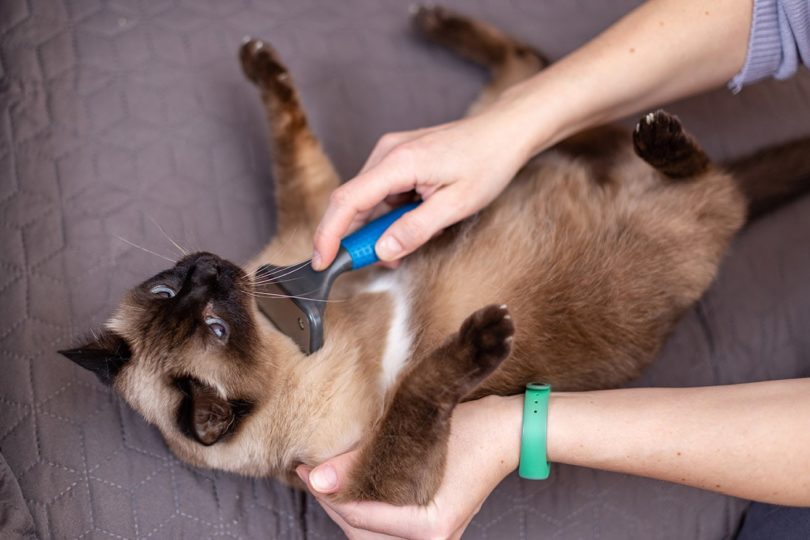
With badly behaved cats, sometimes our desire to get it over with can backfire. Grooming too quickly can lead to snagging and pulling that makes the experience even less enjoyable. This can end up in a vicious cycle where your cat grows more and more hostile towards brushing. Instead, focus on slowly brushing out as much fur as you can—even if you don’t get it all done. If you have to choose between a thorough brushing and a better experience, pick a good experience.
6. Consider a Low Maintenance Cut
If you’ve got a longhair cat that needs daily detangling, consider getting a trim, at least as a temporary measure. A lion cut or similar haircut will help keep your cat’s fur from getting into dire straits and make it easier to groom. It’s best to let a professional groomer do this, as shaving an unruly cat without experience is a recipe for disaster. Once you’ve got a short haircut, don’t stop grooming, though! Use the time when it’s growing out to establish a good routine and teach your cat that brushing can feel good. By the time your cat’s hair is long enough to tangle again, hopefully brushing is a normal part of its day.
Last Thoughts
Regular grooming can be a big chore if your cat hates being brushed, but the good news is that the fighting is usually temporary. Once you get into a good routine with your cat, most cats will get used to it. Some brush haters even learn to love it and look forward to regular grooming time! But getting a cat to a comfortable place can take patience, consistency, and a willingness to experiment. We hope these tips will help you find the routine that works best for you.
Featured Image Credit: Olesya Kuznetsova, Shutterstock



